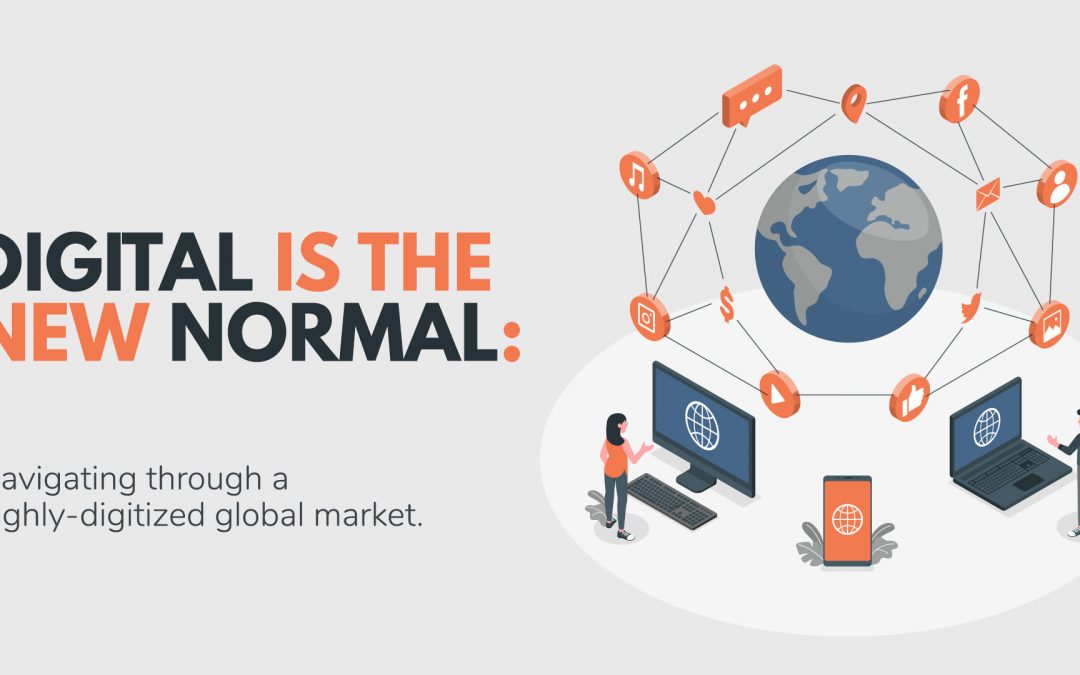One of the biggest lessons many businesses have learned from the recent global lockdown order is how critical it is to create a strategically digitized environment. The pandemic drove many enterprises to enforce a shift in operations – from physical to digital. According to a recent article published by McKinsey, “The COVID-19 crisis seemingly provides a sudden glimpse into a future world, one in which digital has become central to every interaction, forcing both organizations and individuals further up the adoption curve almost overnight.”
Even as we enter a post-pandemic era, digital operations will remain the new normal for many businesses. But for those that have yet to register on this transformation, operating in a highly digitized environment poses serious vulnerabilities stemming from being in a traditional production for so long. While it seems daunting and expensive at first, mapping out – and accelerating, for that matter – digital initiatives open many opportunities for companies to leverage their competitive advantage.
Invest in technology.
To prepare for a digital “new normal,” the first step is to update your existing technology architecture to fast-track digital transformation within your ecosystem. After a thorough audit of your IT infrastructure, the next step is to explore tools that will allow your team to become more agile and adapt to the new and unanticipated – just like a global pandemic. According to Serge Findling, Vice President of Research at IDC, “CIOs must urgently rework their plans and adapt to the unknown business environment laying ahead.”
Upgrade Digital Literacy.
The only constant in technology is change – either you adapt or you get left behind. Technology will continue to outpace itself, and as such, companies must learn faster than ever before. A recent report showed that the demand for technological skills would only keep increasing from 2016 to 2030. As the market changes, we’ll continue to see the rise of cloud solutions, Functions-as-a-Service (FaaS), and low-code/no-code tools that are accessible to non-IT users or experienced developers. Transformative change doesn’t stop from piloting digital initiatives – we have to continue upgrading our digital literacy and navigate our way through these future trends.
Create a Digital Workplace.
Even before the coronavirus outbreak, digital workplaces and virtual teams were already the norms for many startups and disruptors. Due to the developments in information technology, a traditional workplace environment is no longer the only option to collaborate with your team. By leveraging technology, a digital workplace creates an environment where employees can easily access data and resources essential to the success of their roles. This cycle also strengthens a higher return on your IT investments.
We’ll continue to see the rise of digital initiatives in the next coming years – and now is not the time to play it safe. Many businesses have already seen the value of creating a highly digitized workplace. Incorporating digital initiatives to generate valuable real-time data helps decision leaders make smarter and better decisions to grow their business.
The COVID-19 outbreak accelerated the push for a digital transformation – and we’ll continue to see challenges from different directions in navigating through this digital “new normal.” But to thrive in the future, businesses need to re-evaluate their organization’s resilience and jumpstart a more robust response to a crisis – one that can be further strengthened by a strategically curated digital journey.
If you’re seeking help in creating a digital workplace for your company and see an increase in production while getting 60% savings in cost, TeamSpan Global Solutions provides consultation to some of the most remarkable industry leaders and startups on the rigorous process of building high-performing virtual teams. We are insanely passionate about creating value for our customers – we can help you scale up, expand operations, and augment contingency staffing plans – for a fraction of the cost.

